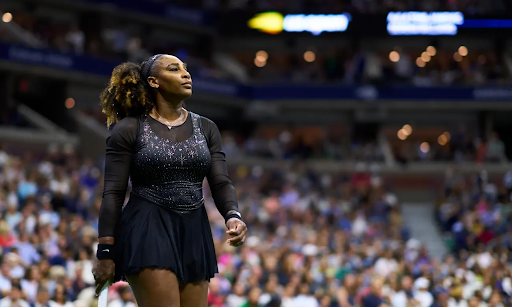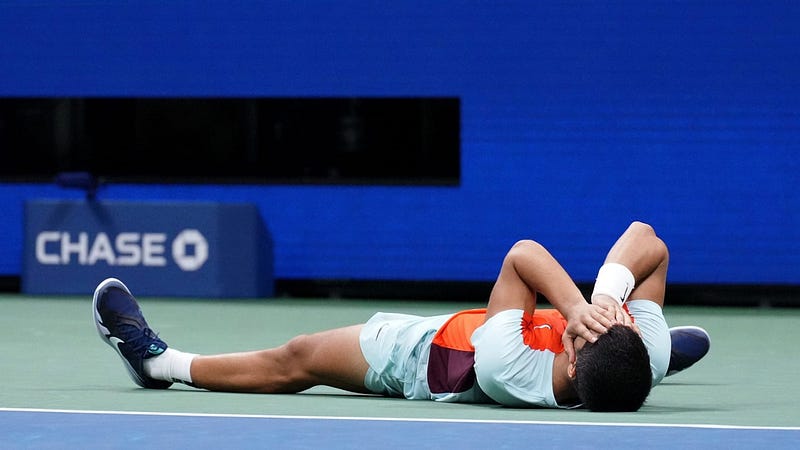
The U.S. Open, logically, should be a lame tournament. By the time it rolls around, the globetrotting tennis tour is seven months into the calendar. Players are mentally and physically wrecked from playing on Australian hard courts, Parisian clay and English grass with precious few breaks between tournaments. By the U.S. Open, injuries tend to pile up. Notable players on the men’s and women’s tour frequently miss out on winning the tournament through injury, a shock upset or sheer accumulated fatigue. It is the major tournament that an interloper has the best chance of winning.
And yet, this year, the spoils belong to Iga Świątek and Carlos Alcaraz, both of whom look set to dominate their respective tours for seasons to come. Świątek, at just 21, has now won two major titles this year — Roland-Garros, a tournament played on clay courts that Świątek has taken to as naturally as a fish to water, and now the U.S. Open on a less favorable cement surface. The latter is likely the more impressive and the scarier to her rivals: at no point this tournament was Świątek at her imperious best, but she won the title regardless, beating fellow top-ten players Aryna Sabalenka and Ons Jabeur along the way. She has been ranked number one in the world since early April, and her canyon-sized lead in the WTA rankings (she is 5275 points ahead of #2 Jabeur; winning a major is worth 2000 points) indicates that her reign will persist for a while yet.
Alcaraz is even younger than Świątek at 19, and with the men’s tour under the long rule of Novak Djokovic, Rafael Nadal,and Roger Federer, it’s been increasingly difficult for young players to break out in recent years. Mastery of the best-of-five-sets format, both physically and mentally, is not something one tends to stumble upon in their teenage years. The amount of active major winners on the men’s tour under the age of 30 has plummeted viciously in the 2010s. But Alcaraz is different, in possession of a steely mind and tireless legs, and he won three consecutive five-set matches — battles that averaged more than four hours in length and topped out at a terrifying five hours, 15 minutes. He then had enough in the tank to edge Casper Ruud in a tight four-set final. With the win, he is now the world number one, the youngest man ever to hold that honor. The timing of his arrival threatens players in their mid-twenties — with Djokovic and Nadal still around, it is hard enough to win a major title. Alcaraz makes it even tougher. He is the youngest player in the top 50; he will be around for a very long time.

The main story of this tournament, though, was Serena Williams. Having announced through a
Vogue
article pre-tournament that she was moving away from tennis — “evolving,” as she put it — anticipation for the U.S. Open was at a fever pitch. Attendance figures were through the roof. Williams’s run stoked the fans’ enthusiasm; in her second match, she beat world number two Anett Kontaveit. She is a 23-time major champion. Steffi Graf, who held the record for most major titles in the Open Era before Williams, retired at 30. Williams will turn 41 later this month. That she could still beat top-ranked players was at once astonishing and unsurprising. No tennis player has touched as glorious a peak as Williams, who has revolutionized the game on and off the court, but the idea of a 40-year-old outhitting and outracing someone barely half her age still bent logic.
Even the way Williams’ run ended was incredible. In the third round against Ajla Tomljanovic, after a fierce push to even the match from a set down, Williams found herself out of gas in the third set. Her serve, the best in the history of the women’s game, abandoned her as Tomljanovic broke her three times in the third set. Down 5–1, Williams’s fate was sealed. Yet as Tomljanovic served for the match, Williams dug in. She saved a match point by dismissively crushing her opponent’s serve for a winner. The game turned into an epic struggle. The greatest tennis players in history are at their best when the pressure is at its highest, and with Williams’s career in its final moments, she hit several splendid shots that were a searing reminder of her legendary status, despite being long past her best years. Tomljanovic was finally able to get over the line on her sixth match point. Recognizing the weight of the moment, she gracefully allowed Williams to acknowledge the crowd (a gesture usually reserved for whoever wins a match) and paid tribute to the great champion in her post-match interview.
Williams did as well as can be expected in her own post-match comments; summarizing a career like hers is about as easy as picking a single page to sum up
Lord of the Rings
. She was not without a tinge of regret. She did not play for the first half of 2022. It takes tennis players a while to find their best level — or even a good one — after a long layoff. There is no substitute for the rigor of match play. Williams had made unbelievable strides in mere weeks. “I should have started sooner this year!” Williams said. A comeback is unlikely; she has proven everything a tennis player and person can many times over and her business ventures and family will surely keep her busy, but greatness like hers makes it impossible not to wonder.
















